Get lesson 1 of all sports: Sign up for a free pe planning membership
Athletics
Learning Objectives
- Begin to apply basic movements in a range of activities.
- Begin to explore different running, jumping, and throwing techniques.
- Explore successful and unsuccessful techniques.
Curriculum information
Literacy Keywords
- Co-ordination
- Movement
- Develop
- Balance
Citizenship
- Awareness of space
Numeracy
- Counting
Equipment
- Cones
- Beanbags
- Hoops
Risk Assessment
- Suitable clothing and footwear worn by participants.
- Equipment suitable for participants, safe and checked.
- Area safe and checked - any hazards removed.
- Safety information highlighted to participants.
- Staff aware of all emergency procedures, including designated 1st aider.
Knowledge Checks
Throughout this plan you will see ‘Knowledge Checks’ to help you ensure the pupils are acquiring the intended knowledge as the lesson progresses. The two types of knowledge to focus on in PE are:
- Declarative Knowledge: Factual knowledge concerning movement, rules, tactics, strategies, health and participation (best practiced through spoken or written observations of a practical demonstration).
- Procedural Knowledge: Knowing how to apply declarative facts (best practiced through demonstration or participation).
Teacher Notes
- This is the first lesson in the Athletics unit of work.
- The intention of the lesson is to introduce the children to the new topic. It gives them the opportunity to experience the topic and explore the skills they will be learning and developing in the unit.
- The activities within the lesson incorporates many of the skills that will be covered in the unit – running, jumping and throwing. The activities give you the opportunity to make an initial assessment of your class. By observing the children, you can make a judgement on their current ability and plan and differentiate lessons for the rest of the unit.
- Introduce Athletics to the children and ensure they are familiar with safety rules that go with performing a run, jump and throw:
- When running, children should remember to keep head up and watch where they are going.
- When jumping, children should remember to use the correct technique, making sure they land safely on both feet.
- When throwing, children should remember to check that the area behind and in front of them is clear and it is safe to throw.
- It should also be highlighted that it is important to ensure it is safe to collect the thrown object – nobody else should be throwing into this area whilst you collect your throwing object.
Activities & Games
Whistle Game
3 - 5 mins- Ask the pupils to move around the playing area. Start slow and increase speed i.e. Walking, jumping, hopping, skipping, jogging.
- When you blow the whistle once, pupils freeze.
- When you blow the whistle twice, pupils sit down where they are.
- Each time you blow the whistle, change the way the children move e.g. hopping, side stepping, high knees.
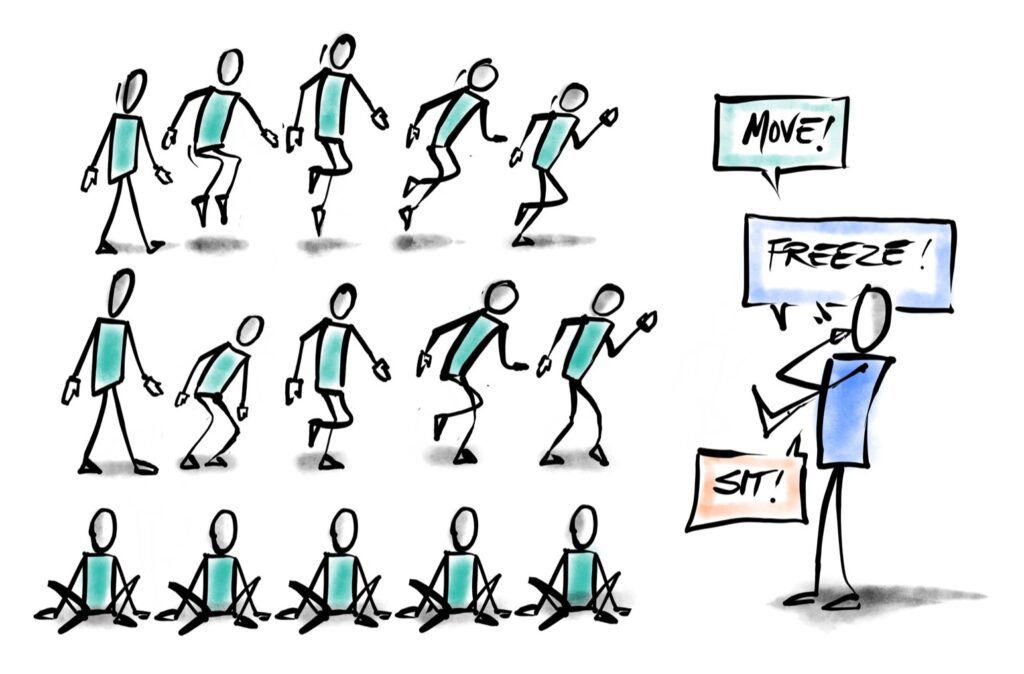
Teaching Points
- Head up and eyes open.
- Move into space.
- Avoid others.
Progression
- Speed up the activity – decrease the time between whistle blows.
- Ask the pupils to think of different ways to move around the area.
Running Technique Intro
5 - 10 mins- Pupils jog inside the area. Every time the whistle blows, children freeze (from the warm up activity).
- Every time children begin moving again, give them a specific way to run…
- with arms stretched out wide/down by the side of the body.
- on tip toes/heels.
- with feet out to the side.
- keeping knees down.
- Discuss the techniques with the class; Which felt good, which made running more difficult?
- Ask children to think about different parts of their body when running.
- What should we do with our arms when we run? Can you try it the next time you run?
- What should we do with our head/knees/feet/? Let’s try it this time.
- Demonstrate the correct running style with the class, and give the children time to have a go for themselves (see teaching points).
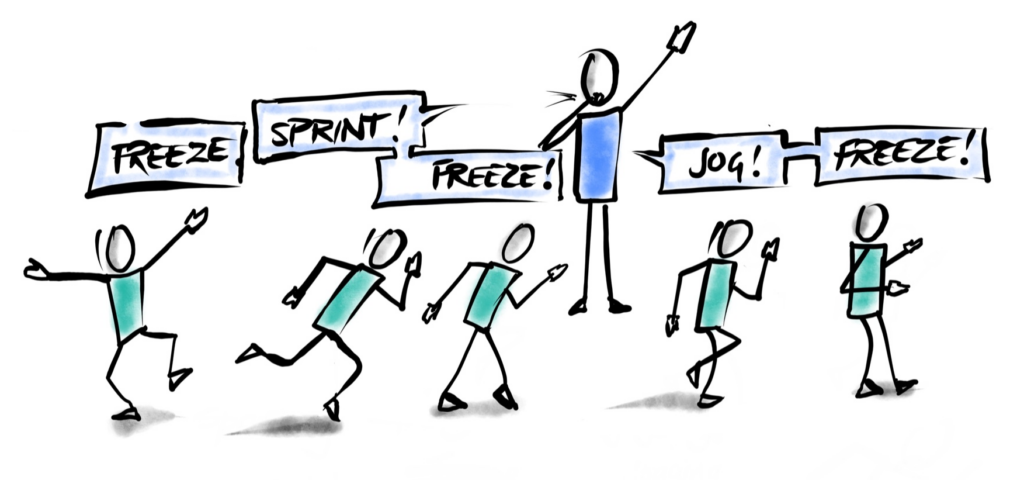
Teaching Points
Correct technique:
- Head up and straight
- Straight back
- Bend knees
- Swing arms – ‘L’ shapes – hip to lip movement
- Balls of the feet for sprinting / Heel to toe for jogging
To make activity harder:
Ask children to show their correct running technique before discussing and demonstrating.
To make activity easier:
Provide pupils with more hints and clues when discussing the correct technique.
Jumping Technique Intro
5 - 10 mins- Ask the pupils to stand in a safe space, or a line facing in the same direction.
- In a good space, ask pupils to jump as far forward as they can. Allow time for children to practise several jumps.
- Repeat with different instructions to jumping e.g. with straight legs, with arms above head/down the side of the body, on tiptoes etc.
- Demonstrate the correct jump technique (see teaching points).
- Allow children time to practise the jumping technique.
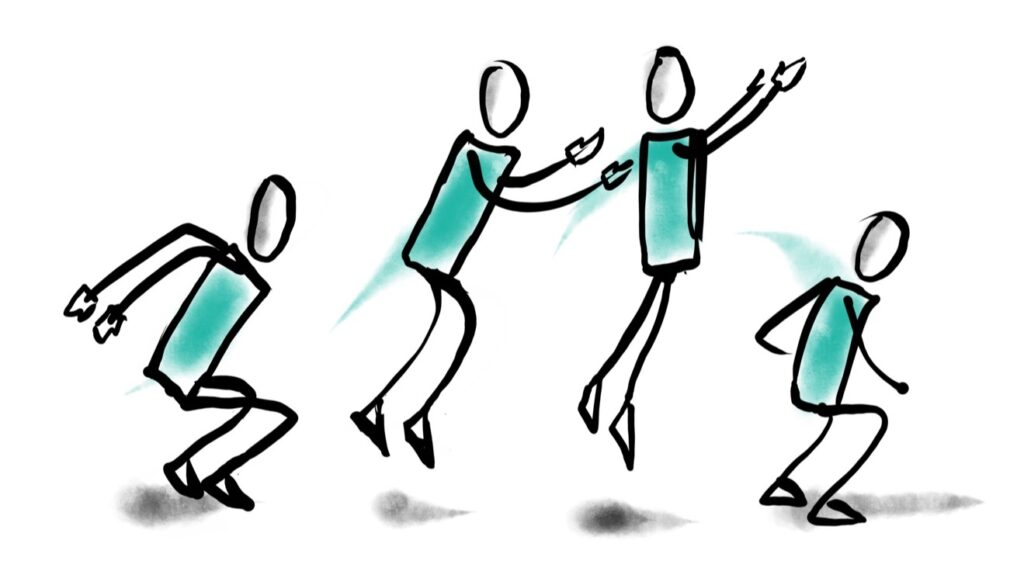
Discuss with the class which jump was the most successful and why, for example: – bending our knees helped us to jump further – keeping our head up meant we could jump in a straight line.
Teaching Points
Correct technique:
- Head up and straight
- Bend knees
- Swing arms
- Land on balls of feet
- Cushion landing by bending the knees
Knowledge Check
Procedural Knowledge:
- Ask some children to demonstrate the activity/skill.
Declarative Knowledge:
- Ask some children to describe what is required to perform the task with success.
Throwing Technique Intro
5 - 10 minsCorrect underarm technique:
- Hold beanbag in the middle of the palm
- Face the target
- Swing arm backwards
- Bring arm forwards and release the beanbag when hand is between hip and shoulder level
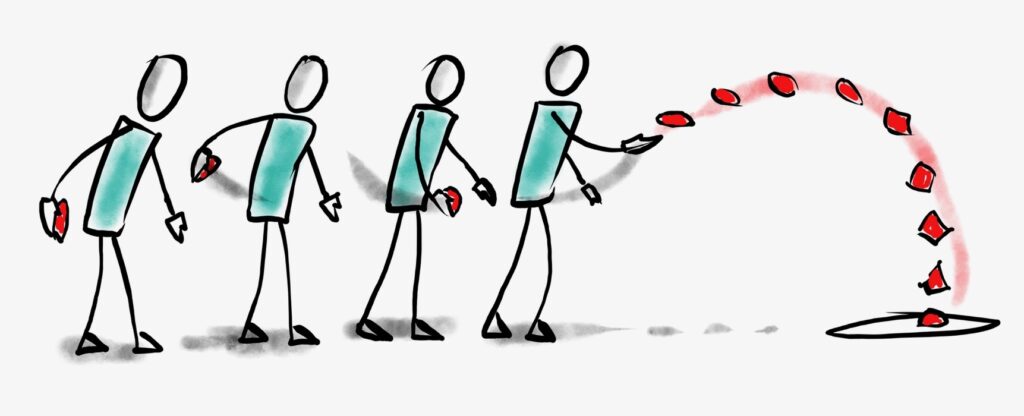
Progression: Introduce a point scoring system – 1 point every time the beanbag lands in the target hoop.
Teaching Points
- Pupils work in pairs, with one beanbag per pair.
- Give the pupils some time to explore different ways of throwing beanbags into the hoop placed in front of them.
- Allow pupils time to share their ideas.
- Demonstrate the correct under arm throwing technique (see teaching points).
- Allow children time to practise the underarm throwing technique – were they more successful when using the correct technique?
Knowledge Check
Procedural Knowledge:
- Ask some children to demonstrate the activity/skill.
Declarative Knowledge:
- Ask some children to describe what is required to perform the task with success.
Command Game
5 - 10 mins- Give each pupil 1 beanbag and ask them to find a safe space.
- In a good space each, children begin jogging in the spot.
- Call out a number. Children must perform the action linked to the number…
- Number 1 = sprint on the spot.
- Number 2 = perform 5 high jumps on the spot.
- Number 3 = throw and catch a beanbag 5 times on the spot.
- Keep calling out numbers for the children to respond to, performing each movement on the spot.
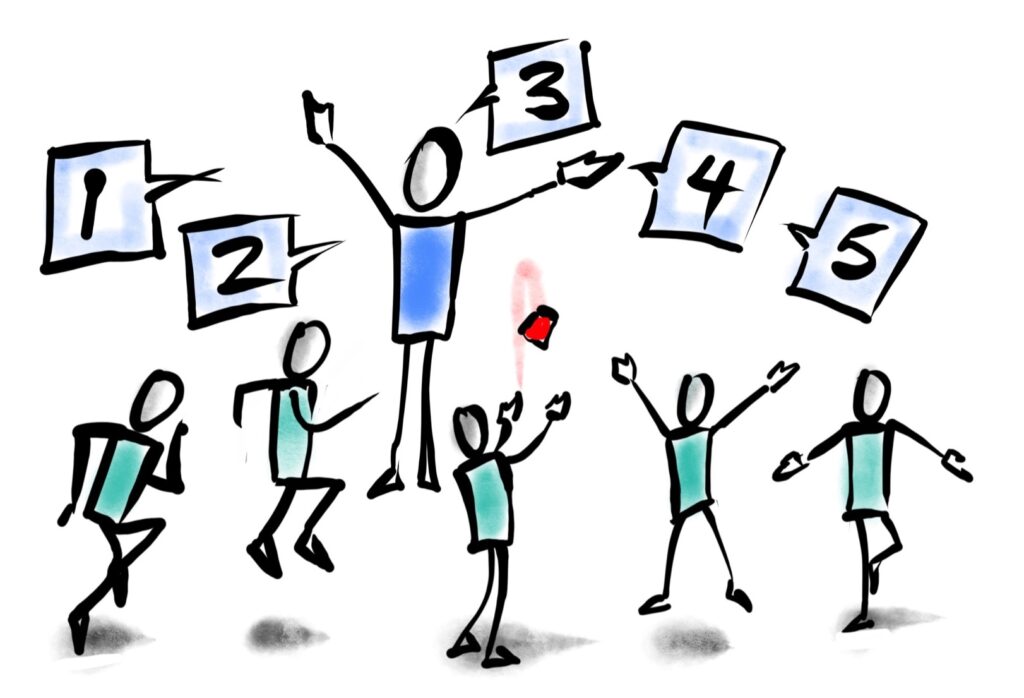
Teaching Points
- Listen carefully to instructions.
- Recap good techniques of running, jumping and throwing.
- Ask the children to remember all instructions.
Progression:
- Change the actions (for example, jumping forwards, throwing to a target).
- Add more numbers and actions.
- Play the game whilst moving around the hall instead of on the spot.
Spaghetti Stretch
3 - 5 mins- Call out different types of pasta that the children must perform the correct cool down and stretch actions…
- Spaghetti – walk around tall and thin stretching arms up over the head.
- Pasta twists – walk in a straight line and then quickly spin and walk the other way.
- Lasagne – lie as flat as possible on the floor stretching arms and legs.
- Tagliatelle – pupils walk around wiggling and waving.

Teaching Points
- Hold for 10-12 seconds
- Watch and copy
- Hold stretch
- Where can you feel the stretch?
Knowledge Check
What new techniques did you learn this lesson?
- Running, jumping, throwing techniques.
Did you find any technique difficult or easy?
- Encourage children to think about their performance and areas of improvement.
Get lesson 1 of all sports: Sign up for a free pe planning membership